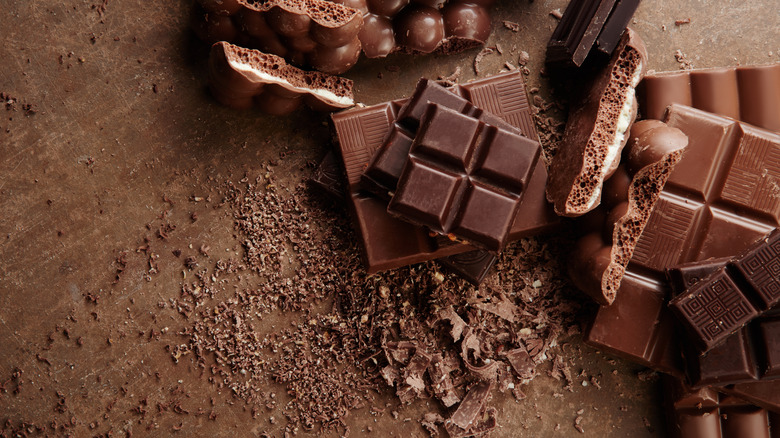The Reason US Chocolate Tastes Different From European Chocolate
Chocolate is a delightful delicacy that has been eaten around the world for millennia. In fact, it is believed that the Mayans first began consuming chocolate in ancient Mesoamerica more than 5,000 years ago, according to History. Back then, top-quality, sippable chocolate was considered sacred and exchanged as valuable currency.
Chocolate made its European debut in the 16th century, and later became popular in the United States via famed candymaker Milton Hershey around 1900. Today, the widely loved ingredient is enjoyed by folks of all socioeconomic lifestyles in an assortment of forms, including candies, baked goods, indulgent drinks, and so much more.
If you've ever traveled across the pond and treated yourself to a serving or two of chocolate — or if you've ever had the opportunity to munch on imported chocolate stateside — you may have noticed some discernible contrasts in its taste and texture. But is there a real difference in the formulas for American and European chocolate? The short answer is yes. Here's why.
American and European chocolate contain different ingredient amounts
Perhaps you just can't get enough Hershey's and Mars products. Or maybe you're keen on Cadbury or Toblerone. No matter which place of chocolaty origin you prefer, it's important to understand and appreciate the key ways in which each style is made.
According to Candy Club, it all boils down to countries' unique food-making regulations. To put it simply, America and Europe differ when it comes to the amount of cocoa that can be used in recipes, the distinct flavor profiles and sources of the available ingredients, and the ratio of raw ingredients such as milk, sugar, and cacao beans. For instance, American chocolate typically uses cacao beans from South America, and European chocolate contains cacao beans from West Africa, per Gourmet Boutique.
Let's use milk chocolate — one of the most beloved varieties on earth — as an example. In the UK, milk chocolate must contain 25% or more cocoa solids, whereas in the US, milk chocolate must contain 10% or more (per BBC). As far as which continent's chocolate truly tastes better, well... that's completely up to the consumer.

